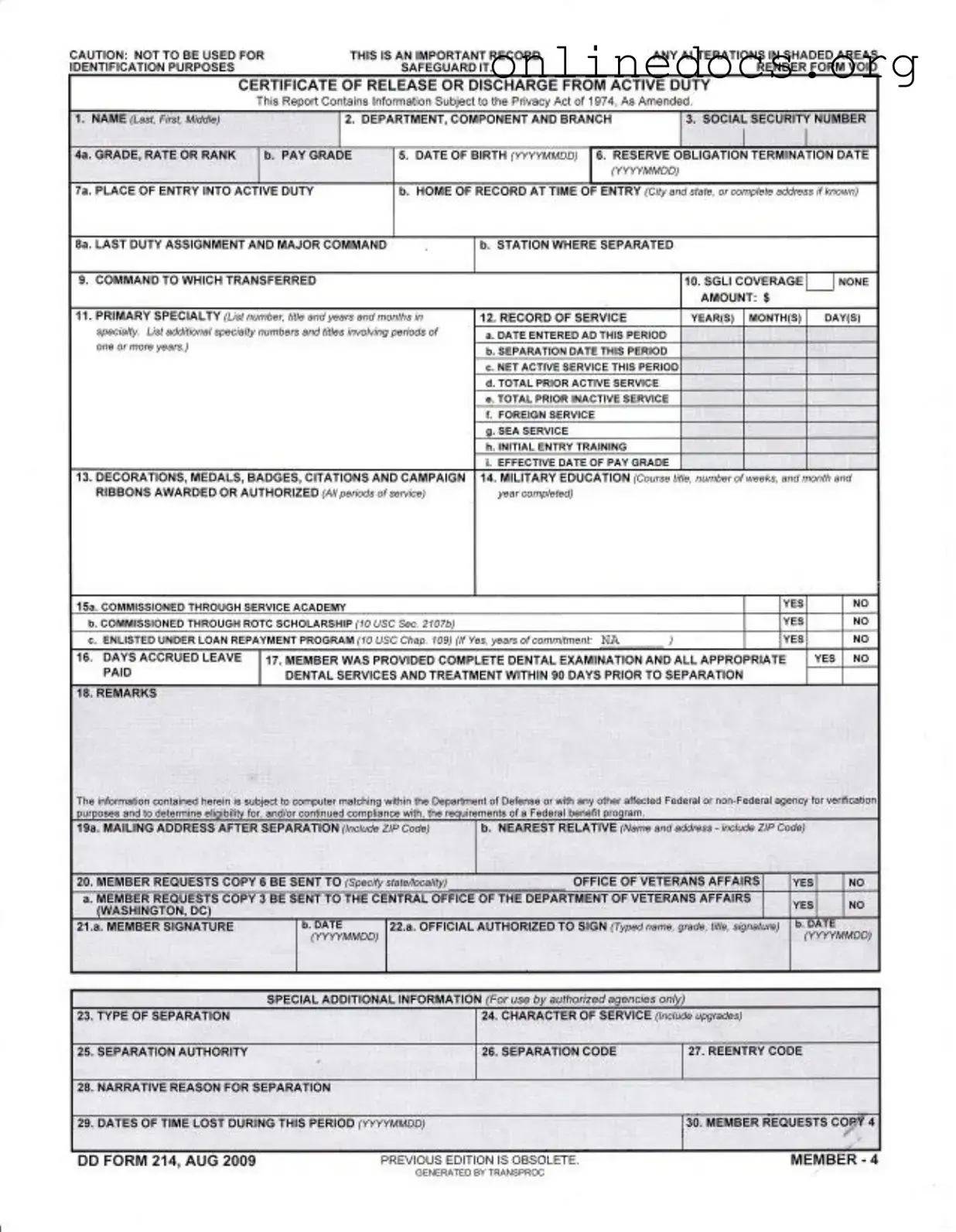The DD Form 256, also known as the Honorable Discharge Certificate, serves a similar purpose to the DD Form 214 by documenting a service member's honorable discharge from the military. This certificate provides official recognition of the member's service and is often required for veterans to access benefits. While the DD Form 214 details the member's service history, the DD Form 256 focuses specifically on the nature of the discharge, affirming the member's honorable status.
The DD Form 257, or General Discharge Certificate, is another document that parallels the DD Form 214. This form is issued to service members who do not meet the standards for an honorable discharge but have still completed their service. Like the DD Form 214, it serves as a formal record of the member’s service, but it indicates a general discharge status, which may affect the member's eligibility for certain benefits.
The DD Form 258, known as the Other Than Honorable Discharge Certificate, is similar in function to the DD Form 214 but signifies a more serious breach of conduct. This document outlines the circumstances surrounding the member's discharge and can impact future employment and benefits. Both forms are critical for veterans, but the DD Form 258 conveys a less favorable discharge status.
The Certificate of Release or Discharge from Active Duty (DD Form 214) is comparable to the National Guard Bureau Form 22. This form is issued to members of the National Guard and documents their service and discharge status. Like the DD Form 214, it is essential for veterans to access benefits and is recognized by various institutions as proof of service.
The VA Form 21-526EZ, Application for Disability Compensation and Related Compensation Benefits, shares a similar importance with the DD Form 214 in that it is used by veterans to apply for benefits. While the DD Form 214 provides proof of service, the VA Form 21-526EZ specifically requests information on the veteran’s service-related disabilities. Both documents are vital for ensuring that veterans receive the benefits they are entitled to.
The Texas RV Bill of Sale form is a vital document that formalizes the sale of a recreational vehicle, ensuring that both the buyer and seller have a clear understanding of the transaction. This form not only acts as legal proof of purchase but also safeguards ownership transfer, providing reassurance and legal coverage for the involved parties. For further details on the importance and utilization of this document, you can visit legalformspdf.com.
The VA Form 22-1990, Application for VA Education Benefits, is another document that complements the DD Form 214. This form is used by veterans to apply for educational benefits through the Department of Veterans Affairs. The DD Form 214 serves as proof of eligibility for these benefits, making it essential for veterans seeking to further their education after service.
The Form DD 295, Application for the Evaluation of Learning Experiences During Military Service, is similar to the DD Form 214 as it assists veterans in translating their military experience into academic credits. This form helps veterans gain recognition for their service-related skills when pursuing further education. Both forms are instrumental in helping veterans transition successfully into civilian life.
Finally, the VA Form 21-534EZ, Application for DIC, Death Pension, and Accrued Benefits by a Surviving Spouse or Child, is related to the DD Form 214 in that it is used by the dependents of veterans. This form allows survivors to apply for benefits based on the veteran's service record, as documented in the DD Form 214. Both forms are essential for ensuring that the families of veterans receive the support they need after the veteran's passing.
